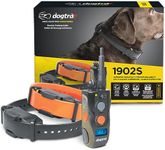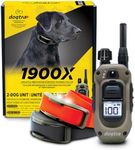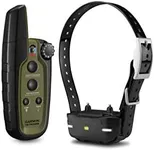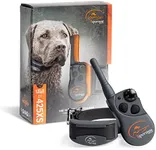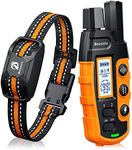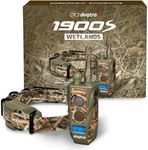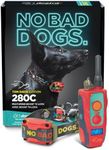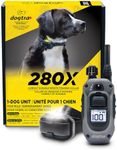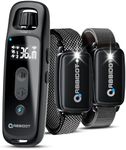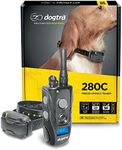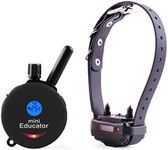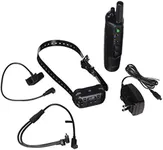Buying Guide for the Best Dog Shock Collars
Choosing a dog shock collar is a decision that should be made with care and responsibility. These collars are used for training purposes, but it's important to prioritize your dog's safety and well-being. Before buying, consider if a shock collar is truly necessary for your situation, and always use it as a last resort after trying positive reinforcement methods. When shopping, focus on features that ensure humane and effective training, and always follow the manufacturer's instructions to avoid causing harm to your pet.Stimulation LevelsStimulation levels refer to the range of intensity settings the collar can deliver, from very mild to stronger corrections. This is important because every dog has a different sensitivity, and you want to be able to adjust the collar to the lowest effective level for your pet. Collars with more levels offer finer control, allowing you to find the right setting that gets your dog's attention without causing distress. If you have a small or sensitive dog, look for collars with a wide range of low settings. For larger or more stubborn dogs, a collar with higher maximum levels may be necessary, but always start at the lowest setting and increase only if needed.
Correction ModesCorrection modes are the different ways the collar can alert your dog, such as beep, vibration, or static shock. This is important because not all dogs respond the same way to each type of correction. Some dogs may react well to a beep or vibration, making it unnecessary to use the shock feature. Look for collars that offer multiple modes so you can start with the gentlest option and only use stronger corrections if absolutely necessary. This flexibility helps you tailor the training to your dog's temperament and needs.
RangeRange indicates how far the remote can communicate with the collar, usually measured in yards or meters. This matters depending on where you plan to use the collar. For training in a small yard or indoors, a short range is sufficient. If you plan to use the collar in large open spaces, like parks or fields, a longer range is better. Choose a range that matches your typical training environment to ensure the collar works reliably when you need it.
WaterproofingWaterproofing tells you whether the collar can withstand exposure to water, such as rain, puddles, or swimming. This is important if your dog spends time outdoors or likes to play in water. Some collars are only water-resistant, meaning they can handle light rain, while others are fully waterproof and can be submerged. If your dog is active and outdoorsy, a waterproof collar is a safer choice to avoid damage and ensure consistent performance.
Battery LifeBattery life refers to how long the collar and remote can operate before needing a recharge or new batteries. This is important for convenience and reliability, especially if you use the collar frequently or for long training sessions. Some collars have rechargeable batteries, while others use replaceable ones. If you prefer less maintenance, look for a collar with a long-lasting, rechargeable battery. If you travel often, consider how easy it is to replace or recharge the batteries.
Adjustable FitAdjustable fit means the collar can be resized to fit your dog's neck comfortably and securely. This is important for both safety and effectiveness, as a collar that's too loose may not work properly, and one that's too tight can cause discomfort or injury. Make sure the collar can be adjusted to your dog's size, and check the manufacturer's recommended weight or neck size range to ensure a good fit.
